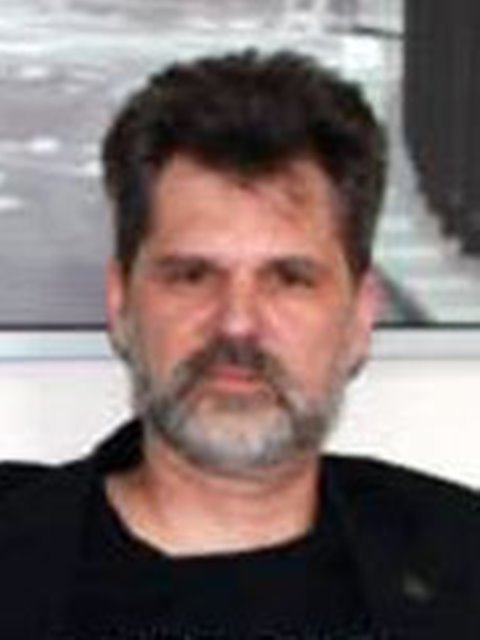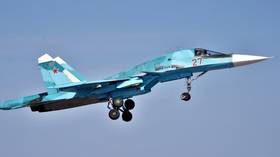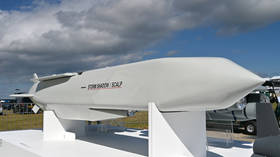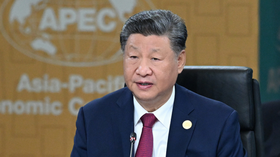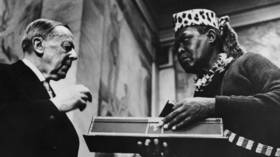Terror in Turkey: What lies behind it?

The spectacular terrorist attack on the Caglayan Justice Palace and its bloody resolution, culminating in the deaths of the hostage-takers and their hapless hostage, are events that occupy public opinion in Turkey.
But this gruesome episode all but underlines what appears to be at stake in Turkey's upcoming general elections.
Last Tuesday, Turkey was struck by a power blackout of truly gigantic proportions. The Turkish press announced that "electricity was reportedly cut in 79 of Turkey's 81 provinces,” including the country's metropolitan population centers such as Istanbul, Ankara and Izmir. The outage started at 10:36 a.m. and persisted till about 9 p.m. The Turkish daily Hurriyet quoted electricity officials as saying that this was Turkey's biggest blackout in 15 years. In fact, Turkey's PM Ahmed Davutoglu declared that "every angle, including terrorism, is being investigated" in connection with this nationwide event crippling the nation's infrastructure and hampering people's lives.
In response, the Minister for Energy and Natural Resources, Taner Yıldız came out and said "at this stage whether or not its terrorism is a big possibility. I can't say either whether it is a cyber attack.” While the country was enveloped in this electric fog of disinformation, a very real terrorist attack was perpetrated in the heart of Istanbul's judiciary: around lunchtime two members of the outlawed group Revolutionary People's Liberation Party-Front (or DHKP-C) entered the Caglayan Justice Palace, Europe's largest courthouse covering an area of more than 300,000 square meters that was opened in 2011. This bombastic building has really come to symbolize the ruling Justice and Development Party's (or AKP) tight hold over the country's justice system and public bureaucracy.
Terror Strikes and Martyrdom Ensues
The two men subsequently identified as Safak Yayla and Bahtiyar Dogruyol apparently entered the Caglayan Justice Palace dressed in judge’s robes and proceeded to the sixth floor where the office of the prosecutor Mehmet Selim Kiraz is located. Yayla and Dogruyol then took the prosecutor hostage: "a statement published on a website called Halkın Sesi included a photo of Kiraz with a gun pointed at his head.” The prosecutor had been supervising the investigation into the death of Berkin Elvan, the teenager hit by a tear gas canister in the course of the Gezi Park protests in the summer of 2013. The statement indicated that Kiraz was to be “punished by death” if demands were not met by 3:36 p.m. - three hours after the hostage crisis began. The DHKP-C demanded that the police officers “who murdered Berkin Elvan confess their crimes during a live broadcast” to then be tried in “people's courts.” In addition, the statement also called for the dropping of any charges against those prosecuted for their involvement in protesting Berkin Elvan's death.
During the standoff, Yayla and Dogruyol used the prosecutor's mobile telephone, repeatedly calling two separate numbers on Bulgaria and Greece - arguably to consult with other DHKP-C members hiding abroad. Then, the terrorists Yayla and Dogruyol requested that a delegation conduct negotiations with the authorities on their behalf. As a result, in the course of a six-hour period negotiations were held between the police and the hostage-takers. But in the end, a special forces' team launched an operation which started out with an explosion followed by an ominous silence, and, in turn, followed by multiple gunshots. The two DHKP-C members were killed, while the prosecutor Kiraz was severely wounded by gunshots to his body and head, arguably fired by the DHKP-C members. Mehmet Selim Kiraz was then rushed to the hospital where he passed away towards midnight. And now, as a result of a law passed in 2012 by the AKP government, the slain prosecutor will attain the rank of a martyr. According to Islamic tradition, those who die in the service of their faith become martyrs and are thus assured their place in Paradise (Cfr. Quran 22.58). In the Turkish Republic, however, soldiers dying in battle or as a result of a terrorist attack were traditionally regarded as martyr, a clear indication of the fact that nationalism in many ways was meant to replace Islam during the Kemalist era (1923-2002). But this changed in 2012, as explained by then-still-PM Recep Tayyip Erdogan: "We are including civilians who die in terror events into the category of martyrs... and their relatives will receive compensation and a monthly allowance.”

A second terror strike
The following day, 1 April 2015, other DHKP-C members launched an equally audacious as well as foolhardy terror attack at about 17.50. This time their goal was the Police Headquarters on Vatan Avenue (commonly referred to as the Emniyet) in the Aksaray district of Istanbul.
Two individuals, a man and a woman, carried out the assault - the woman being armed with a rifle, two hand grenades and one pistol. The ensuing firefight led to the death of the latter, identified later as Elif Sultan Kalsen, while the man apparently managed to escape. Two police officers were also injured as a result.
Recently Kalsen had come to public attention, as security footage of her evading police capture in the wider Taksim area was aired on various Turkish television channels. Following the foiled attack, Vatan Avenue was closed for traffic till 23.00. Later on, at about 04.30 in the morning, the police sent out various special forces' teams to conduct simultaneous searches at a number of addresses in the popular Okmeydanı area of Istanbul. The teams arrested a number of suspects, whom they started questioning in the course of the following hours. Turkey's President Recep Tayyip Erdogan, who was abroad at the time of the attack on the Caglayan Justice Palace, immediately visited the relatives of the murdered prosecutor upon his return home.
Erdogan and his wife Emine spent about an hour consoling Kiraz family members, and upon leaving their house, he addressed the crowd that had gathered outside: "I believe that the martyrdom of our brother will [transform Mehmet Selim Kiraz into] a patron saint of a new blossoming in this country. This [then] will God-willing become a means for the awakening of our people . . . As people who believe in fate and providence, we, as people of this civilization [arguably referring to the religion of Islam] will God-willing continue on [this] road [towards a New Turkey] with patience, [and] faith.” In this way, Erdogan cunningly utilizes the tragedy to push his own agenda, thereby even transforming Kiraz into a quasi-holy figure supporting the AKP and its policy aims from the afterlife.
The DHKP-C vs. the AKP
In this way, two DHKP-C suicide commandos managed to grab the wider public's attention, while highlighting the lax security precautions in Turkey's courthouses and basically turning the wider population's sympathies towards the ruling AKP and its leadership.
The dead Yayla, Dogruyol, and Kalsen belonged to an organization that is listed as a terrorist group by Turkey, but also by the US and the European Union. The DHKP-C's most notorious action dates back to the previous century when its members staged an attack on the so-called Sabancı Towers in Levent, Istanbul. On 9 January 1996, Mustafa Duyar, İsmail Akkol ve Fehriye Erdal gunned down the businessmen Ozdemir Sabancı and Haluk Gorgun, as well as secretary Nilgun Hasefe. With this cold-blooded murder, the DHKP-C made its mark on Turkish society as an extreme leftwing, Marxist-Leninist and anti-capitalist terror group bent on disrupting the Turkish state and its workings. As an offshoot of the Revolutionary Left (or Dev Sol), the group formally took shape in 1994 under the leadership of Dursun Karatas (1952-2008) and has since continued its fight against the Turkish government which it considers to be a pawn of the imperialist West. As a result, the DHKP-C is particularly known for its anti-U.S. and anti-NATO stance, the two mainstays of Western imperialism for many.
During the Kemalist era (1923-2002), the Western orientation of the Turkish state was all but proverbial, particularly after 1952 when Turkey joined NATO as its first and still only Muslim member. Hence, arguing that Turkey was but a pawn of Western imperialism seemed easy. The group has continued its fight into the 21st century, as the overtly Islamic AKP ushered in a post-Kemalist regime that appears keen to reassess and revitalize Turkey's Islamic past and identity. Nevertheless, the AKP leadership also appears very much beholden to the dictates of Washington.
Prior to the accession of Tayyip Erdogan as PM, DHKP-C members killed two policemen and an Australian tourist (in 2001). During the current administration, the DHKP-C appears to have been behind a suicide bombing at the US Embassy (2013), directly targeting the local lair of the great bogeyman himself. Whereas very recently, on 6 January 2015, a female member of the group blew herself up at the so-called tourist police station in the Istanbul district of Sultanahmet, killing one officer and injuring another. Afterwards the group claimed responsibility, declaring that the suicide attack was meant to "to punish the murderers of Berkin Elvan" and "to call the fascist state that protects AKP's corrupt, stealing ministers to account.” In this way, the organization appropriated the anti-AKP Gezi protests for its own cause. At the same time, it seems now that the DHKP-C has singled out the AKP-led government as its current target. In all likelihood, this re-calibration of the Marxist-Leninist and anti-capitalist terror group's object was necessitated by the AKP's openly neo-liberal economic policies, and particularly the corruption allegations, popularly known as #AKPgate, aimed at various high-ranking AKP members, including the charismatic Tayyip Erdogan. In the end, one could argue, the DHKP-C has now become the sworn enemy of Turkey's ruling party and its neo-liberal stance disguised under an Islamic veil of obfuscation and demagoguery.
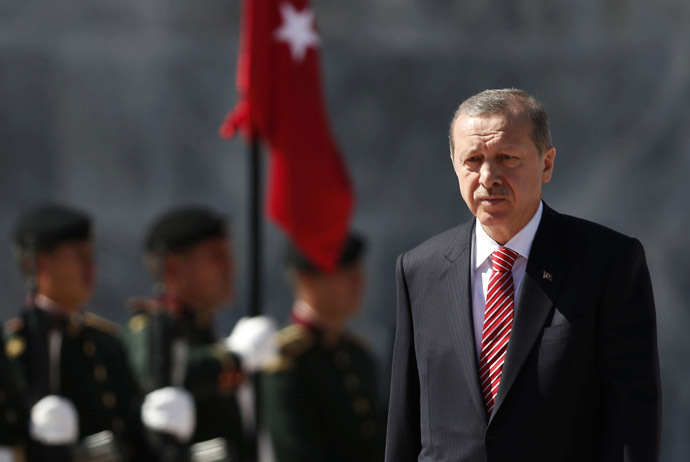
The Islamic Great Eastern Raiders-Front or IBDA-C
But, in some ways, this re-calibration also seems to operate the other way around. Recently, a bomb attack on the offices of the Islamist periodical Adımlar Dergisi was immediately attributed to the DHKP-C by papers close to the AKP-led government. Whereas, it seems that on 19 March, six days before the actual attack, a group calling itself the People's Defense Unit (or Halk Savunma announced via Twitter Birligi) that the people behind the periodical were to be punished for "legalizing the murderers.”
As such, the Adımlar Dergisi is closely affiliated with the group Islamic Great Eastern Raiders-Front (or IBDA-C). According to Yoni Fighel, a researcher at the Israeli Center for Special Studies (CSS), IBDA-C is "basically a Sunni Salafist group that advocates Islamic rule in Turkey,” basing themselves primarily on the writings and ideas of the poet and intellectual Necip Fazıl Kısakurek (1904-83).
These days, the works of Kısakurek enjoy great popularity in Turkey, as his work is universally praised by such prominent figures like the President, Tayyip Erdogan, and the PM, Davutoglu. Kısakurek, Fighel explains, really "sought to establish another Turkish caliphate throughout the entire Islamic world, based on a restoration of pure Islamic values.” Arguably, such a way of thinking aligns quite well with the AKP's medium to long-term goals for the Republic of Turkey. As a result, it should come as no surprise that the ruling AKP appears rather sympathetic to the organization of IBDA-C and its members. The IBDA-C leader Salih Mirzabeyoglu, better known as the Commander (or as he was known after birth in 1950, Salih Izzet Erdis) was sentenced to life imprisonment for heading a terrorist organization aiming to topple the political regime through armed struggle on 29 December 1998. But, rather unexpectedly, he was pardoned on 23 July 2014, and even met with Erdogan some four months later. And, it appears the AKP very easily and quite self-assuredly refers to the Marxist-Leninist DHKP-C as a handy and useful scapegoat whenever a terror event occurs, as if this organization somehow crystallizes all the unsavory qualities deemed anti-Islamic and unbefitting the New Turkey that is now in the process of being built and solidified in accordance with Islamic precepts arguably covering up neo-liberal goals and gains.
In view of the upcoming general elections on 7 June, the timing of the murder of Mehmet Selim Kiraz and the subsequent attack on the Emniyet on the Vatan Avenue seems calculated to spread a sense of unrest amongst the wider public. Prime Minister Davutoglu expressed these sentiments at the funeral service of the prosecutor in the Istanbul district of Eyup: "We are aware that we face an axis of evil and there is an attempt to instigate an atmosphere of chaos ahead of the election.”
As such, pro-government media immediately seized upon the terrorist outrage to denounce the opponents of the AKP as openly sympathetic to the terrorists. The newspapers Hurriyet, Cumhuriyet, Posta and Bugun, all belonging to Dogan Grubu, a media holding well-known for its opposition to the AKP, are now being subjected to an investigation over the charge they were broadcasting "propaganda for the terrorist group.” This gruesome episode will thus further deepen the already existing chasm between supposedly secular Turks and pious and dutiful AKP supporters. The figure of Erdogan continues to polarize the population, particularly as he now appears to employ his supposedly impartial position as president to campaign openly for the ruling AKP and its policy aims. It seems that in the aftermath of this bloody hostage crisis lines are being drawn in the sand. It seems to me as if the AKP leadership is now really all but repeating the words uttered by George W. Bush in the aftermath of the 9/11 attack: "Either you are with us, or you are with the terrorists.”
The statements, views and opinions expressed in this column are solely those of the author and do not necessarily represent those of RT.
The statements, views and opinions expressed in this column are solely those of the author and do not necessarily represent those of RT.
